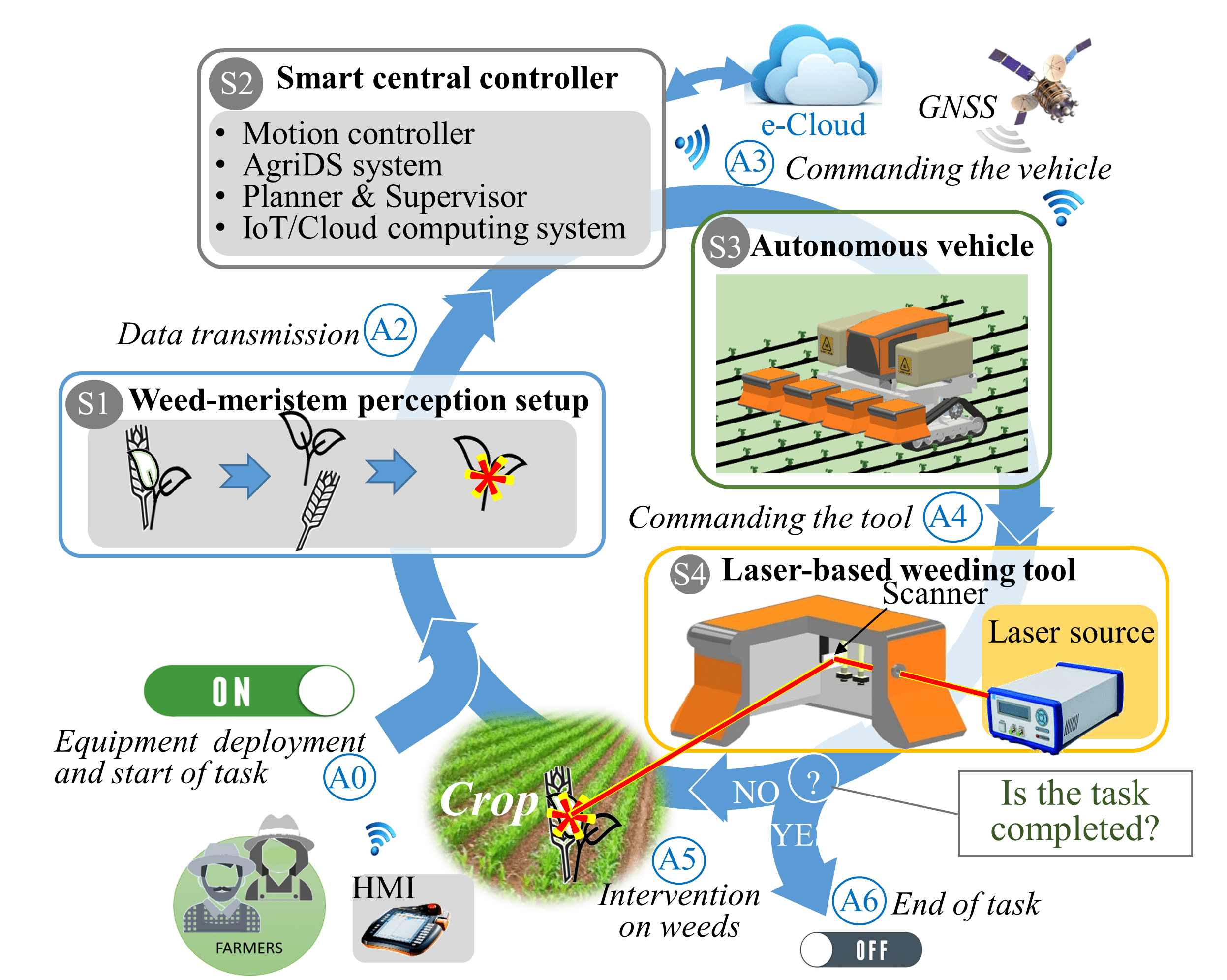The Hidden Struggle Against Weeds

Every gardener has faced the annoyance of weeds that seem to return no matter how often they’re removed. The culprit? Often, it’s the roots left behind beneath the soil. Simply snapping weeds off at ground level might give a quick sense of victory, but this tactic rarely offers lasting relief. True, effective weed control demands attention to what lies underground. This discussion delves into why uprooting is crucial, the biology of weed regrowth, notorious weeds with resilient roots, and proven strategies for thorough root removal.
Why Roots Are the Foundation of Weed Survival

Roots are the essential lifeline for any plant, and for weeds, they are both a survival tool and a means to aggressively spread.
- Energy Reservoirs: Many weeds store vital nutrients and energy in their roots, enabling new shoots to emerge even after the visible parts are cut back.
- Perennial Tenacity: Perennial weeds depend heavily on their root systems to endure through multiple growing seasons.
- Regrowth from Fragments: Some species can regenerate from tiny pieces of root, making complete removal necessary to prevent resurgence.
- Underground Spread: Invasive species like bindweed and Japanese knotweed propagate through extensive underground rhizomes that can stretch far from the original plant.
Cutting or pulling only the above-ground parts ignores the powerful root network hidden beneath the surface.
The Pitfalls of Surface-Level Weed Removal
At first, trimming weeds at the surface might seem effective—flower beds look neat, and lawns appear refreshed. However, this is often a temporary fix.
- Rapid Regrowth: Weeds frequently reappear within a couple of weeks, sometimes more vigorously than before.
- Endless Effort: Repeatedly removing only the tops without tackling roots leads to a frustrating cycle of constant maintenance.
- Nutrient Competition: While you’re busy managing regrowth, weeds continue to siphon off water and nutrients, undermining your plants.
- Seed Spread: If weeds flower before being fully removed, they can produce seeds that exacerbate the infestation.
Breaking this cycle requires focusing on eliminating the roots.
Weeds That Demand Root Removal
Certain weeds are infamous for their deep, regenerative root systems. Here are some of the toughest to control:
-
Dandelion (Taraxacum officinale)
- Root type: Deep taproot, often 6–12 inches long.
- Challenge: Even tiny root fragments can sprout new plants.
-
Canada Thistle (Cirsium arvense)
- Root type: Spreading rhizomes.
- Challenge: Roots extend horizontally underground, producing multiple new shoots.
-
Bindweed (Convolvulus arvensis)
- Root type: Extensive rhizome network.
- Challenge: Can regenerate from root pieces as small as 2 inches.
-
Plantain (Plantago major)
- Root type: Fibrous root system.
- Challenge: Its low-growing habit shields roots, and the fibrous structure makes complete removal difficult.
Japanese Knotweed (Fallopia japonica)
Root Characteristics:
- Possesses deep, woody rhizomes that penetrate up to 10 feet underground.
- Notoriously invasive worldwide due to its ability to regenerate from even the smallest root fragments.
Nutsedge (Cyperus spp.)
Root Characteristics:
- Develops underground tubers known as “nutlets.”
- Each nutlet can sprout multiple new plants, making eradication challenging unless roots are completely removed.
Why Removing Roots is Essential for Long-Term Weed Control
Focusing on root removal offers several crucial advantages:
- Stops regrowth: Without roots, weeds cannot bounce back.
- Limits seed spread: Extracting roots before plants mature curtails future weed outbreaks.
- Enhances soil vitality: Removing deep-rooted weeds reduces competition for water and nutrients.
- Saves time over time: Although initially labor-intensive, digging cuts down on repeated weeding.
- Protects desirable plants: Eliminating roots prevents weeds from overwhelming nearby flowers, vegetables, or shrubs.
Effective Techniques for Root Excavation
The method depends on the weed species and infestation severity:
-
Hand-Digging with Tools
- Ideal for isolated weeds like dandelions, thistles, or plantain.
- Recommended tools: dandelion digger, hand trowel, hori-hori knife, or narrow spade.
- Tip: Loosen soil around the weed first to avoid breaking roots during removal.
-
Deep Forking or Spading
- Suitable for weeds with extensive or deep root systems.
- Technique: Insert a garden fork deeply, gently lift soil to expose roots, and remove them completely.
- Tip: Extract as much of the root network as possible without snapping it.
-
Utilize Moist Soil Conditions
- Weeding is easier after rainfall or watering when soil is soft and roots can be pulled out more smoothly.
-
Post-Digging Smothering
- For invasive rhizomes like bindweed, cover the area with mulch, cardboard, or landscape fabric to suppress any remaining root fragments.
-
Integrated Control Methods
- For stubborn invasives such as Japanese knotweed, combine digging with smothering or targeted herbicide treatments to prevent regrowth.
Common Pitfalls to Avoid When Digging Roots
- Leaving behind root fragments, which can regenerate new plants.
- Tilling infested soil, which can spread root pieces and worsen the problem.
- Digging in dry, compacted soil where roots are prone to breaking.
- Neglecting follow-up care like mulching or additional weeding.
- Disposing of roots in compost, as many invasive roots survive and spread; instead, use green waste bins or burn if permitted.
When Root Digging May Not Be Feasible
For large-scale infestations or plants with extensive underground systems, digging out roots might not be practical or effective on its own.
Alternative or supplementary methods to tackle persistent weeds include:
- Solarization: Using clear plastic sheets to trap heat and effectively “bake” roots beneath the soil.
- Targeted Herbicides: For stubborn woody invasive plants, carefully applied herbicides might be the only sustainable solution.
- Ground Covers: Introducing vigorous yet non-invasive ground covers can help suppress weed regrowth following initial root removal.
Strategies for Long-Term Weed Management
Combining root excavation with preventive tactics yields the best results:
- Apply a thick layer of mulch to block sunlight and prevent weed seeds from sprouting.
- Lay landscape fabric under gravel paths or ornamental beds to inhibit weed growth.
- Maintain soil vitality by planting densely and using cover crops that outcompete weeds.
- Conduct frequent inspections to remove young weeds early, avoiding the challenge of mature, deep-rooted plants.
- Define garden bed edges clearly to stop creeping weeds from encroaching.
Final Thoughts
Weeds owe their resilience largely to their underground root systems. Simply pulling them at the surface offers only temporary relief. Thoroughly removing roots is crucial for lasting weed control, disrupting their regrowth cycle and promoting a healthier garden ecosystem. Although it demands upfront effort, root removal ultimately conserves time, safeguards soil health, and prevents invasive species from dominating. With the right tools, timing, and persistence, you can reclaim your garden from tenacious weeds and maintain its vitality for years ahead.
- Weed Regrowth Problem: Weeds often return stronger because roots remain underground after surface removal.
- Root Importance: Roots store energy, enable perennial survival, regenerate from fragments, and spread underground.
- Quick Fix Issues: Cutting tops only delays regrowth, wastes effort, and allows weeds to compete and seed.
- Common Tough Weeds: Dandelion, Canada thistle, bindweed, plantain, Japanese knotweed, and nutsedge have resilient root systems.
- Benefits of Root Removal: Stops regrowth, reduces seeds, improves soil health, saves time, and protects other plants.
- Effective Root Removal Methods: Hand-digging, deep forking, digging after rain, smothering with mulch, and combining methods for invasives.
- Mistakes to Avoid: Leaving root fragments, tilling infested soil, digging in dry soil, neglecting aftercare, and improper root disposal.
- Alternatives When Digging Isn’t Feasible: Solarization, targeted herbicides, and ground covers.
- Long-Term Prevention: Use mulch, landscape fabric, healthy dense planting, regular inspection, and garden edging.
- Conclusion: Root digging is essential for lasting weed control, saving time and protecting garden health despite initial effort.
